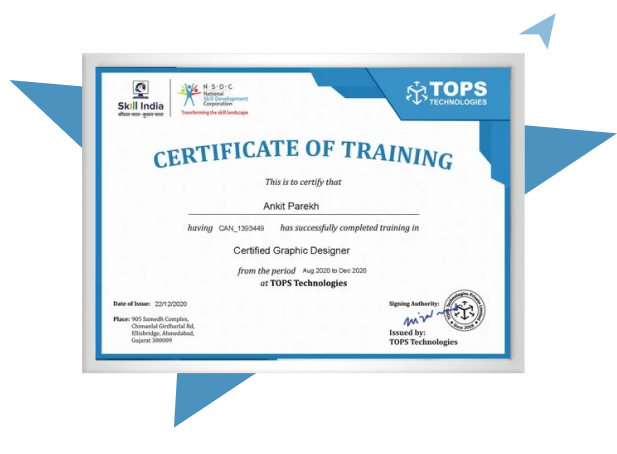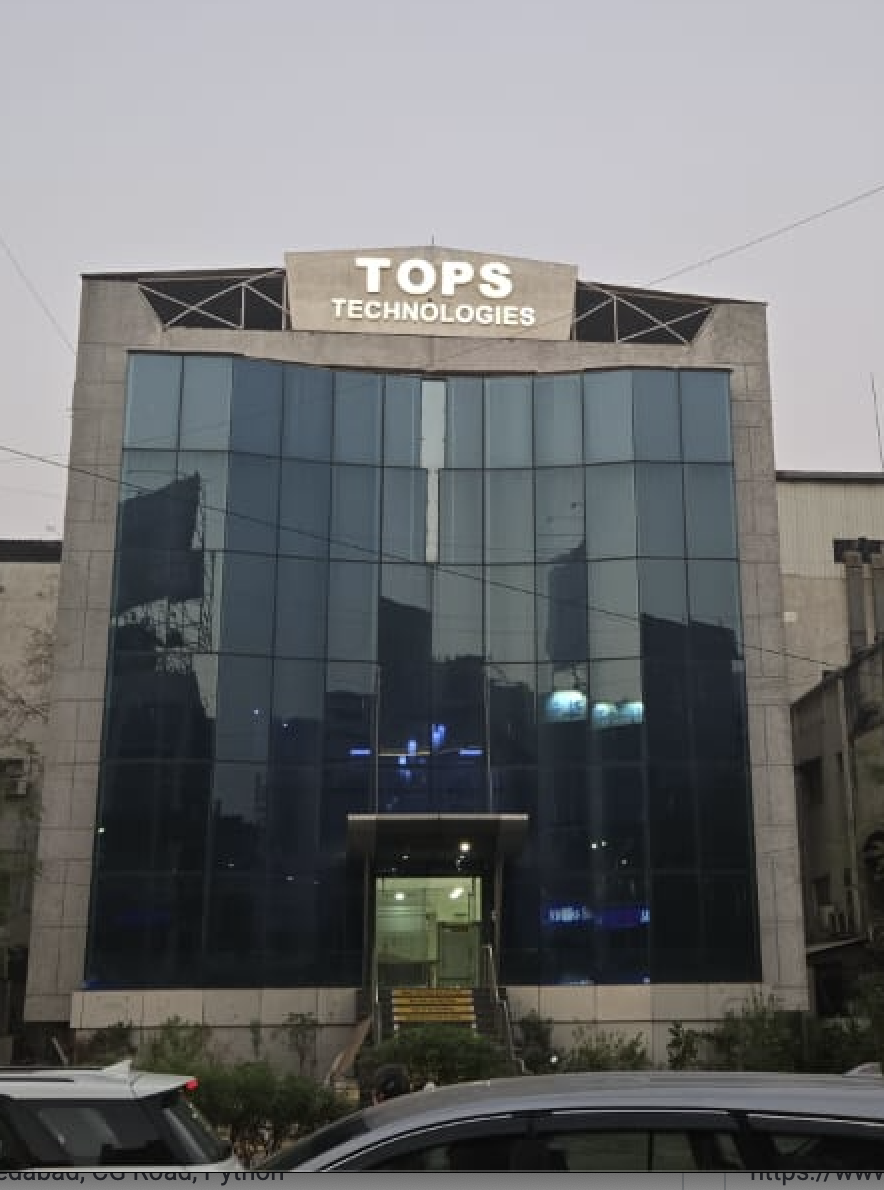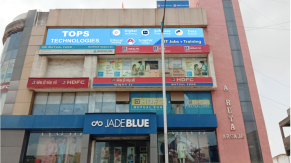Our Facts and Figures
1 Lac+
Student Placed
3000+
Companies TieUp
19+
Offices in India
50+
Industry Courses
Get 100% Job Assistance by enrolling in Certified Internet Of Things Training
Key Highlights
Limited Students Batch
Personalised Attention
Highly Qualified Teachers
Flexible Batch Timings
Interactive Learning
Live Projects
Career Support
Job Oriented Training
IOT Course Highlights
Dedicated IoT Courses for Students and Experienced Professionals
TOPS Technologies offer the best Internet Of Things Training in Rajkot where the future profession demands a command over the subject by understanding the data between connected devices, smart devices, sensors, software, and other things.
Rajkot is one of the best engineering hubs of Saurashtra that pulls a lot of interests from the city and students nearby districts. To survive and emerge as a winner in such a highly competitive environment requires specialized, focused training in the subject. This eventually leads to getting to a highly rewarding job in the IT industry.
The unique feature is that it covers practical training via live project training, welcoming students to TOPS Technologies engineers in real time to work on the client's projects. This is aimed at helping students to gain deeper insights into the subject and performing much better at jobs when placed. Shape your career and guide it in the right direction with the Internet Of Things training course in Rajkot.
Get all the suggestions about the course selection and training by visiting TOPS Technologies Rajkot Training center. We recommend taking a risk-free demo at our center as well. For any query, email us at inquiry@tops-int.com.
40%
Average Salary Hike
4.5 Lacs
Highest Salary
3000+
Hiring Partners
Join Our Free Upcoming Webinar
Learn Python in 60 Minutes
18 Dec 2025, 04:00 PM
Trainer
Sanket Chauhan
(Sr. Technical Trainer)
Want to protect yourself against Malware
19 Dec 2025, 04:00 PM
Trainer
Faruk Pathan
(Sr. Technical Trainer)
Fastest Way to Learn Data Science and Actually Get a JOB
21 Dec 2025, 11:00 AM
Trainer
Dhrumil Joshi
(Sr. Technical Trainer)
Python Full Stack Development
21 Dec 2025, 12:30 PM
Trainer
Anjali Patel
(Sr. Technical Trainer)
Motion Graphics and Animation in Design
21 Dec 2025, 02:00 PM
Trainer
Saurabh Verma
(Sr. Technical Trainer)
Learn the Website Hacks and Provide Better Security
21 Dec 2025, 04:00 PM
Trainer
Faruk Pathan
(Sr. Technical Trainer)
Full-Stack Web Development with PHP and Laravel
20 Dec 2025, 11:00 AM
Trainer
Rajesh Nagar Mngr
(Sr. Technical Trainer)
Android UI Design with Kotlin
20 Dec 2025, 12:30 PM
Trainer
Prakruti Vyas
(Sr. Technical Trainer)
Digital Marketing with AI
20 Dec 2025, 02:00 PM
Trainer
Sanket Chauhan
(Sr. Technical Trainer)
Automated vs. Manual Testing: Choosing the Right Approach
20 Dec 2025, 04:00 PM
Trainer
Rahul Sanghavi CG
(Sr. Technical Trainer)
IOT Course Curriculum
Download Curriculum- Introduction of IoT
- The Internet ofThings
- Introduction to Cloud Computation
- IOT Application of different domain
- Arduino Device
- Arduino IDE
- Connectivity With Serial Port
- Serial Output
- Device Connection With Arduino
- Device Controlling using Arduino Programming
- Variables
- Basic operation(add, subtract,multiply)
- Basic Variable type (string,integers)
- Concatenating String
- Booleans (True/False)
- Lists
- Lists Methods (Append, Extend)
- Adding Lists Together With +
- Sets
- FOR Loops
- Indexing
- Splitting Strings
- Tuples
- Dictionaries
- Working With Sensors
- PIR Motion sensor
- how to use Ultrasonic Sensor
- Work With DHT11 Sensor
- How to use Bluetooth Module(HC-05)
- Connect ESP8266 With Arduino For Wi-Fi Connectivity
- Connect Soil Moisture sensor With Arduino
- How Web Service Working
- Creating web service
- Fetching data in Arduino using web service
- Controlling device using web services
- MQTT
- DDS
- AMQP
- LoRa-WAN
- CoAP
- GSM
- Wi-Fi
- Establish Remote Desktop Connection
Our TOPS Training Centers in India
Course Key Features
Skills Covered
Get Training Certificate by Government
Recognized NSDC/Skill India

- National Skill Development Corporation
- Supported by the vision of PM Shri Narendra Modi
- Certification by NSDC SkillIndia
- Valid for all Jobs and College Training
- International Recognition

FAQ
The course primarily uses C/C++ and Python for device-level programming. JavaScript and Node.js may also be covered for web-based IoT dashboards and backend systems.
A digital twin is a virtual replica of a physical object, system, or process. It uses real-time data from IoT sensors to mirror the performance, conditions, and behavior of its real-world counterpart. This concept is widely used in industries like manufacturing, energy, and urban planning to simulate scenarios, optimize operations, predict failures, and enhance decision-making.
Fog computing brings cloud computing capabilities closer to IoT devices by processing data at or near the edge of the network (e.g., routers, gateways). This reduces the latency involved in sending data to distant cloud servers, which is critical for applications that require immediate responses such as autonomous vehicles, industrial control systems, and healthcare monitoring.
IoT transforms supply chains by providing real-time visibility and control. Devices like GPS trackers and RFID sensors monitor shipments, warehouse inventory, and transportation conditions. Data from these devices helps detect delays, route inefficiencies, or spoilage risks in perishable goods. This leads to better decision-making, reduced losses, and improved customer satisfaction.
Artificial Intelligence (AI) enhances IoT by giving devices the ability to process data intelligently. Instead of just collecting data, AI enables pattern recognition, anomaly detection, and decision-making without human input. Common applications include:
- Facial and voice recognition
- Predictive analytics
- Smart assistants
- Autonomous systems
This synergy, often called AIoT (Artificial Intelligence of Things), leads to smarter, more efficient IoT systems.
An embedded system is a dedicated computing unit built into a device to perform specific functions, often without user interaction. IoT systems, on the other hand, involve embedded systems that are networked and capable of collecting, transmitting, and sometimes analyzing data. While all IoT devices contain embedded systems, not all embedded systems are connected to the internet or considered IoT.
LPWAN (Low Power Wide Area Network) technologies are communication protocols designed for long-range data transmission using minimal power. Examples include:
- LoRaWAN
- NB-IoT (Narrowband IoT)
- Sigfox
These are ideal for remote IoT devices like smart meters, agricultural sensors, and environmental monitors, where frequent battery replacement is not practical and data is transmitted in small amounts over large distances.
Smart home automation refers to the integration of IoT-enabled devices within a household to automate and remotely control functions such as lighting, heating, air conditioning, security cameras, door locks, and appliances. These devices communicate through the internet and can be managed via mobile apps or voice assistants like Alexa and Google Assistant. The result is improved comfort, energy efficiency, and enhanced security for homeowners.
Predictive maintenance uses IoT sensors and data analytics to monitor the health and performance of machines in real-time. By analyzing trends such as vibration, temperature, and usage patterns, it can predict when a component is likely to fail. This allows maintenance teams to perform repairs before breakdowns occur, reducing unexpected downtime, increasing equipment lifespan, and lowering overall maintenance costs.
In the automotive sector, IoT is used to connect vehicles with cloud systems and other devices, enabling features such as:
- Real-time vehicle tracking
- Predictive maintenance alerts
- Driver behavior analysis
- Infotainment and navigation systems
- Advanced safety features and autonomous driving
- Connected cars can share data with manufacturers or fleet operators to optimize performance, enhance safety, and provide a better user experience.
Interview Questions
- Edge Computing: Data processing happens at or near the data source (e.g., a gateway or local server). It's useful for real-time responses and reduces latency.
- Cloud Computing: Data is sent to centralized cloud servers for processing, analysis, and storage. It’s scalable but may introduce latency and depend on connectivity.
An IoT gateway is a device that connects IoT devices to the cloud or other networks. It manages protocol translation, data filtering, security, and local processing. It acts as a bridge between devices and centralized systems, especially in large-scale deployments.
An IoT system typically consists of four components:
- Sensors/Devices: Collect data from the environment (e.g., temperature, motion).
- Connectivity: Transfers data via protocols like Wi-Fi, Bluetooth, Zigbee, etc.
- Data Processing: Analyzes the collected data, often in the cloud.
- User Interface: Allows users to interact with the system, via dashboards or apps.
Some widely used communication protocols in IoT include:
- MQTT (Message Queuing Telemetry Transport): Lightweight protocol ideal for low-bandwidth environments.
- CoAP (Constrained Application Protocol): Optimized for devices with limited processing power.
- HTTP/HTTPS: Common in web applications but heavier for low-power IoT devices.
- Zigbee, LoRaWAN, Bluetooth, Wi-Fi: Protocols for short- and long-range wireless communication.
LoRa (Long Range) is a wireless communication technology designed for long-distance data transmission using low power. It is ideal for IoT applications where devices need to communicate over several kilometers without frequent battery replacement. LoRaWAN (LoRa Wide Area Network) is the protocol layer that manages communication between devices and gateways. It provides secure data transmission, device authentication, and efficient network scalability for smart agriculture, environmental monitoring, and smart city applications.
APIs (Application Programming Interfaces) are essential for enabling communication between IoT devices, platforms, and applications. They define how software components should interact, allowing developers to access sensor data, control devices remotely, and integrate services like analytics or notifications. APIs make IoT systems modular and interoperable, allowing developers to build custom applications, automate workflows, and connect IoT solutions with third-party services or enterprise systems.
IoT is used across various sectors to automate tasks, monitor conditions, and improve efficiency. Common applications include:
- Smart homes: Automated lighting, thermostats, and security systems
- Healthcare: Wearable devices for patient monitoring and health tracking
- Agriculture: Smart irrigation and soil monitoring for better crop management
- Manufacturing: Predictive maintenance and real-time equipment tracking
- Smart cities: Traffic management, energy-efficient lighting, and waste collection optimization
These examples show how IoT improves everyday life and industrial operations.
Common challenges include:
- Security and Privacy: Protecting sensitive data from breaches.
- Interoperability: Integrating devices from different manufacturers.
- Scalability: Managing thousands or millions of devices.
- Power Management: Optimizing energy consumption for battery-powered devices.
MQTT is a lightweight, publish-subscribe messaging protocol. Devices (clients) publish messages to topics, and other devices subscribe to those topics. A broker handles message distribution. It's ideal for low-bandwidth, high-latency networks.
Sensors gather real-time data from their surroundings, such as temperature, humidity, motion, or light levels. This data is essential for making automated decisions, triggering actions, or analyzing patterns in IoT applications.










